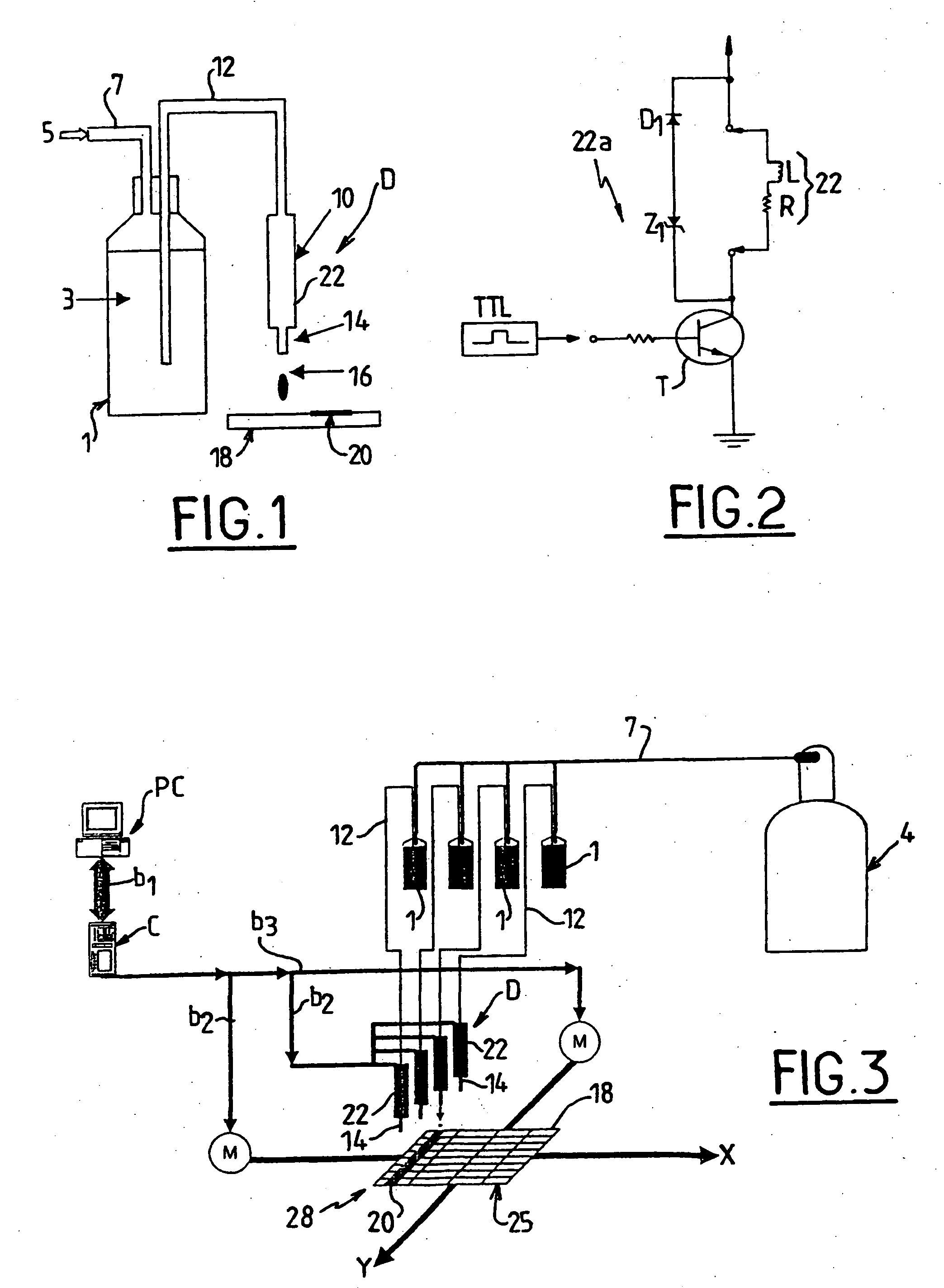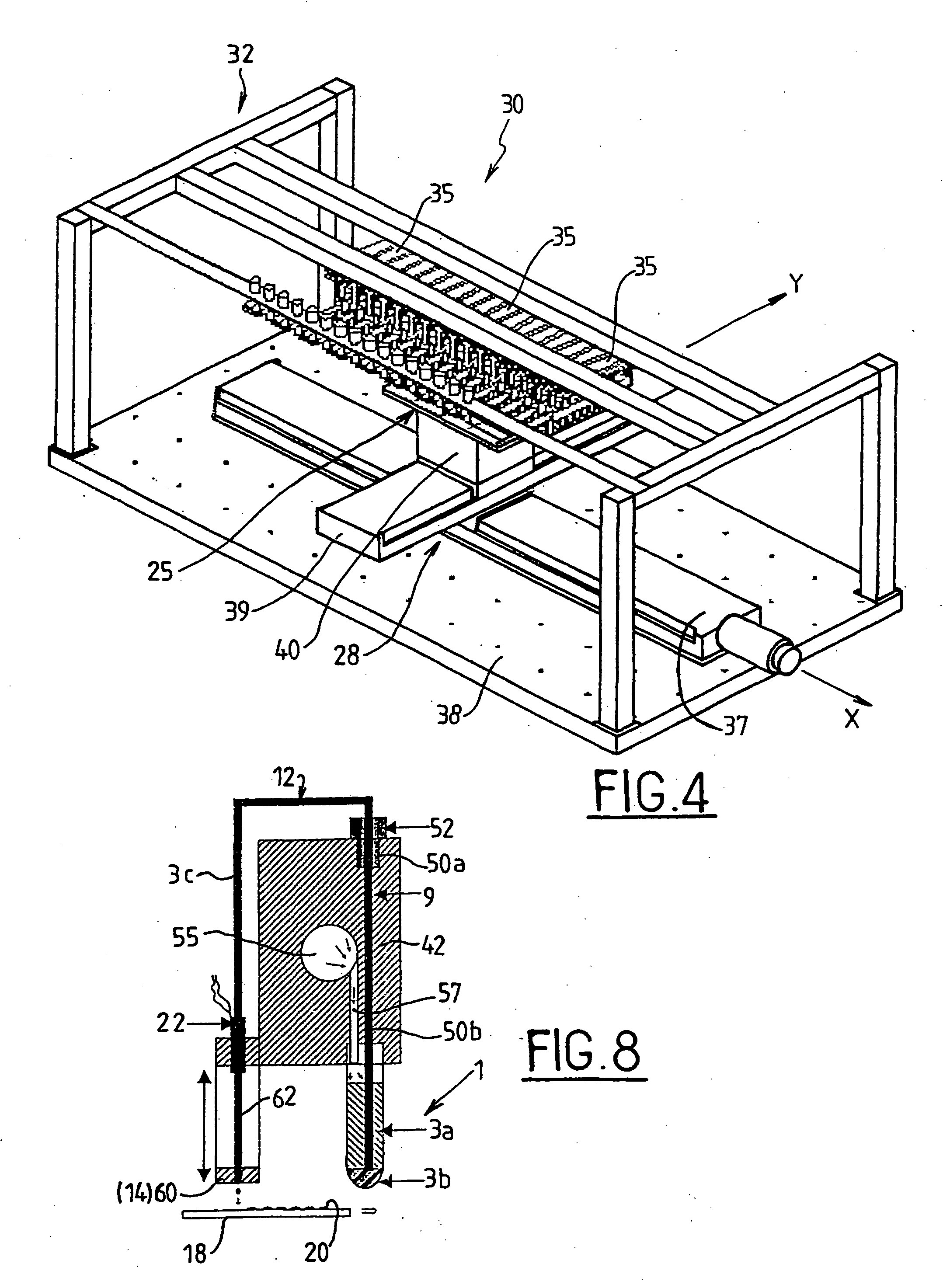Method and a machine for ex situ fabrication of low and medium integration biochip arrays
a biochip array and ex situ fabrication technology, applied in the field of biochips, can solve the problems of high cost, limited application to studies with high added value, and complex and expensive studies, and achieve the effect of high viscosity
- Summary
- Abstract
- Description
- Claims
- Application Information
AI Technical Summary
Benefits of technology
Problems solved by technology
Method used
Image
Examples
Embodiment Construction
[0076]As shown in FIG. 1, a microprojection device of the invention comprises at least:[0077]a tank 1 storing a reagent 3 in liquid form that is constituted by at least one probe diluted in a suitable solvent;[0078]a source 5 of gas under pressure which is connected to the tank 1 via an inlet tube 7, the gas used being an inert gas such as helium, for example;[0079]an actuator 10 which is connected to the tank 1 by an outlet tube 12 which dips into the reagent 3; and[0080]an ejection nozzle 14 which is mounted at the outlet of the actuator 10.
[0081]In general, the function of the actuator 10 is to cause a microvolume of reagent 3 to be projected through the nozzle 14. The actuator 10 may occupy at least two states, respectively an open state and a closed state. By occupying the open state for a determined length of time, the actuator 10 allows reagent 3 to pass into the nozzle 14 under drive from the pressure of the gas that exists in the tank 1, and providing the pressure is suffic...
PUM
| Property | Measurement | Unit |
|---|---|---|
| diameter | aaaaa | aaaaa |
| diameter | aaaaa | aaaaa |
| diameter | aaaaa | aaaaa |
Abstract
Description
Claims
Application Information
 Login to View More
Login to View More - R&D
- Intellectual Property
- Life Sciences
- Materials
- Tech Scout
- Unparalleled Data Quality
- Higher Quality Content
- 60% Fewer Hallucinations
Browse by: Latest US Patents, China's latest patents, Technical Efficacy Thesaurus, Application Domain, Technology Topic, Popular Technical Reports.
© 2025 PatSnap. All rights reserved.Legal|Privacy policy|Modern Slavery Act Transparency Statement|Sitemap|About US| Contact US: help@patsnap.com



